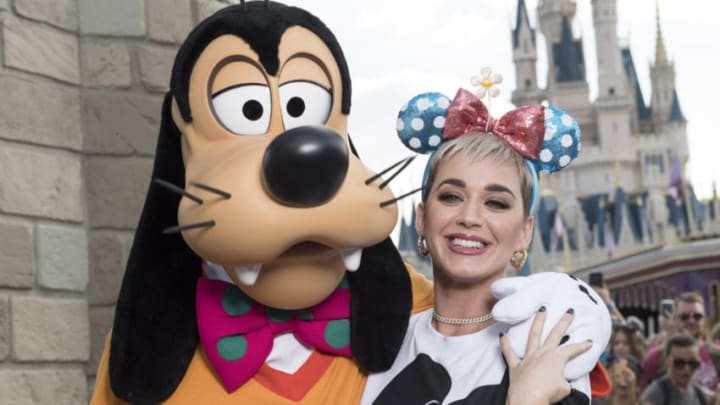Goofy is a Disney mainstay, but why is he such a classic and beloved character?
If animation studios were in the NBA, Goofy would be part of the Disney team’s Big Three along with Mickey Mouse and Donald Duck. But why is he so beloved?
And also…..what exactly is he? He’s not exactly a man (too doglike for that), but he’s also far too human to be completely canine like Pluto, so…it’s very confusing.
And then by the early 1990’s with the TV series Goof Troop, he has a son named Max, so….don’t even ask us to figure that one out.
According to Michael Barrier’s tremendously well-researched 1999 book Hollywood Cartoons: American Animation in its Golden Age, the character emerged in 1932 in the short Mickey’s Revue as Dippy Dawg, eventually acquiring the name Goofy several years later.
His design was primarily created by animator Art Babbitt, and his voice during this time was provided by story man Pinto Colvig, who also filled in on some characters’ voices when necessary.
“Goofy schemed and plotted, however dimly,” Barrier writes (page 148), first rising to prominence in the short Moving Day, becoming the first Disney character outside of Pluto to have a clearly defined inner life, particularly when trying to fix a broken car.
When Colvig left just before the Disney strike of 1941 and the outbreak of World War II, Goofy seemed to clone himself for a variety of sports-based shorts like the Oscar-nominated How to Play Football in 1944 or 1946’s Double Dribble.
A very official radio announcer delivered all the dialogue in these shorts, which could occasionally drift further into fantasy like the 1946 medieval-set A Knight for a Day, where again all characters are Goofy clones, but which has a story that follows a particular squire named Cedric through a jousting tournament.
In the 1950’s the character settled into the familiar cultural expectations of a suburban family man working dutifully at his company, though he gradually lost his stardom as time went on.
According to Wikipedia, Colvig returned to Disney in 1944 and provided Goofy’s voice until his death in 1967, when Hal Smith took over for around the next fifteen years. Smith is best known as Otis Campbell from The Andy Griffith Show, but also provided voice acting for nearly every animation studio in Hollywood, including Owl in Winnie the Pooh and various roles in Scooby-Doo and Huckleberry Hound.
Goofy has had at least two books written specifically about him (more or less): Fiona O’Brian’s 1984 Walt Disney’s Goofy: The Good Sport, and Colvig’s autobiography It’s a Crazy Business: The Goofy Life of a Disney Legend.
Since sometime in the late 80’s, Goofy’s voice has been provided by voice actor Bill Farmer.
By the time of Goof Troop, Goofy had evolved into a Goober Pyle-type character, with middle-aged overbearing parenting style on top of that. The movie sequels, 1995’s A Goofy Movie and 2000’s An Extremely Goofy Movie, continue that theme, as he eventually re-enrolls in college to bond with Max and falls in love with a librarian.
Goofy is currently appearing in Disney Junior cartoons like Mickey Mouse and the Roadster Racers (confusingly retitled as Mickey Mouse’s Mixed-Up Adventures in the third season), and he’s also been a prominent member of the cast of the Kingdom Hearts video game franchise.
Many Goof shorts are available on Disney Plus, and Farmer hosts an originally documentary series titled It’s a Dog’s Life, which recently debuted on the streaming service.
If you’d be interested in joining the Dog O’Day team as we cover canine sports, entertainment and pop culture, you can apply here. Contributor positions are currently on a volunteer basis, though we’re trying to reach the point we they can become paid roles. It could potentially open up paid opportunities at other FanSided Network sister sites, however, in addition to being a fun beat to cover that could make for good experience for an aspiring journalist just starting out.
